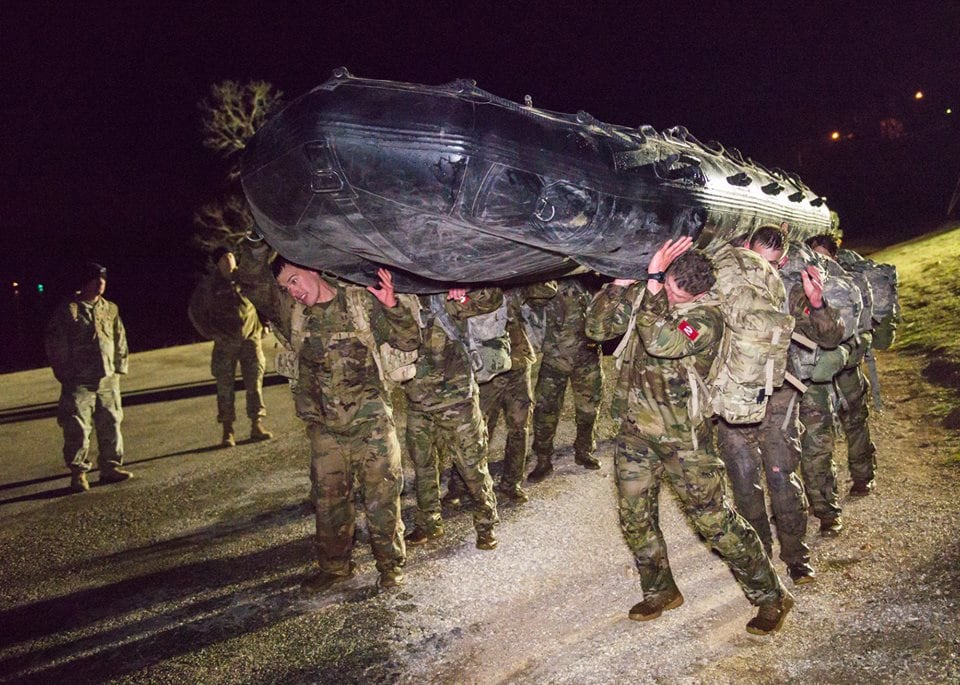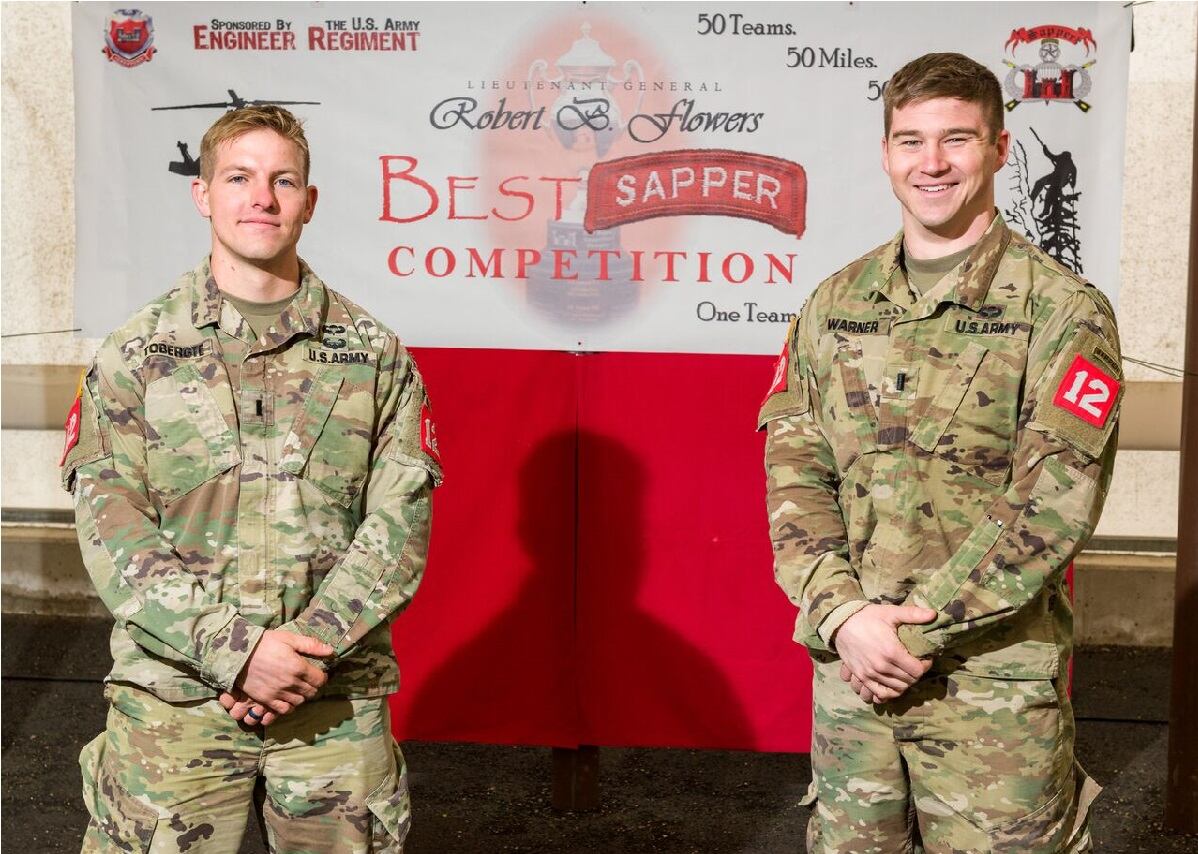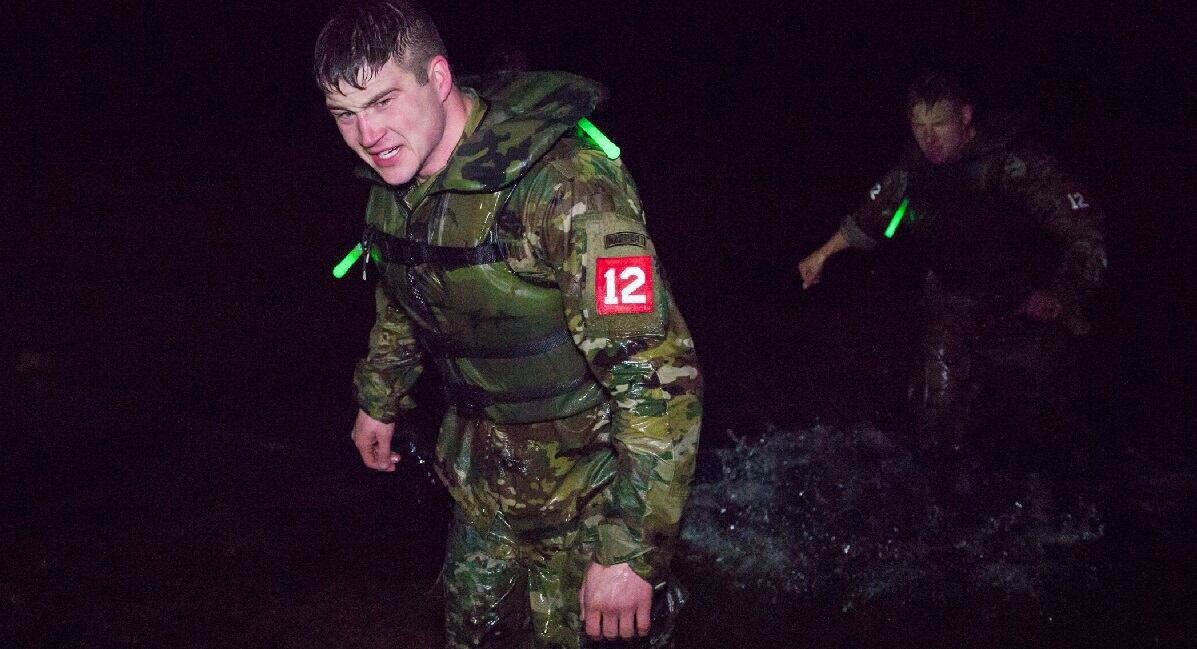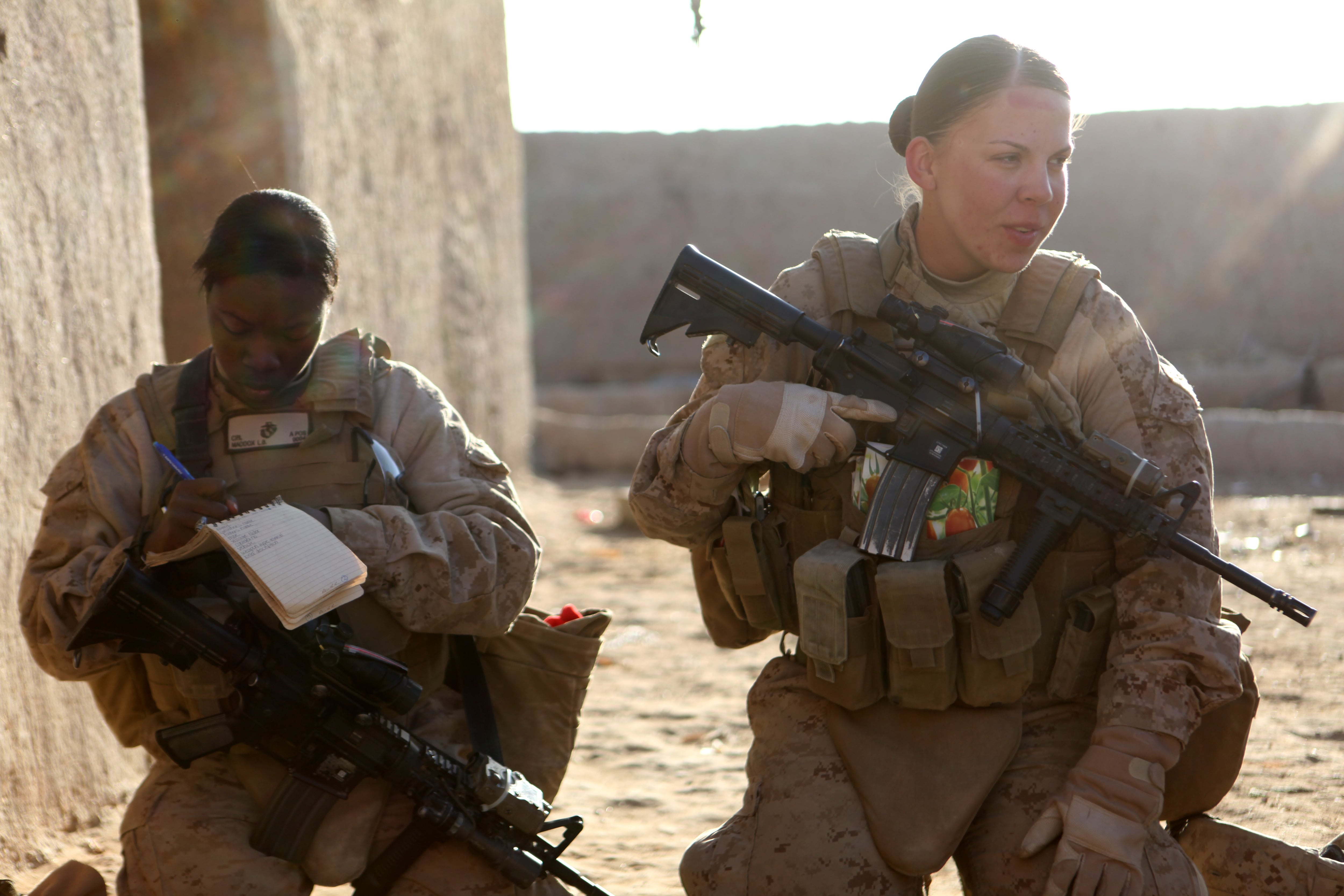If you’ve ever seen a truly world-class performance, you know it. The extraordinary talent, the physical capital expended, and the dedication to perfection stands out so clearly that you know you’ve witnessed something special. I just had such an experience, and it’s worth sharing.
Think of this as the Olympics of the U.S. Military, but with a sharp distinction. Olympics are world-wide competitions held for pure sport and personal glory. The “Best Sapper Competition” is a world-wide competition, but held for military competence by competitors dedicated to defending our American way of life. Every competitor volunteered to serve our country, writing a blank check payable to the people of America, for an amount up to and including his or her life.
A Sapper is an engineer on the cutting edge of the military sword that defends our country. Best known for employing explosives in combat, they do much more. On the offense they are called upon first, to blow holes in enemy defenses, to clear paths for infantry to follow, to clear landing strips for aircraft, to breach doors and to clear mines.
On defense, they are the last to leave the battlefield, blowing bridges, creating tank barriers and hindering the advance of enemy attackers. Sappers have proven their worth from Yorktown to Omaha Beach to the mountains of Afghanistan.
The U.S. Army’s Best Sapper Competition was held recently at Fort Leonard Wood, Missouri, the home of the U.S. Army Engineers, Military Police, and Chemical Corps. Teams from around the globe (two people per team) earned the right to participate in the competition first by individually completing the grueling Sapper Leader Course to earn the coveted Sapper tab, then teaming up to win regional or unit competitions.
RELATED

The final Army-wide competition showcases the best of the best and is hailed as “50 Teams, 50 Miles, 50 Hours,” a tagline that doesn’t do justice to what I saw. In reality, the event pushed these warriors to the very edge of human endurance, demanding physical, mental and spiritual fortitude rarely seen. And this year’s event covered 60 miles, not 50.
The competition began at dusk with a three-mile run and obstacle course — rope climbs, pull-ups, wall climbs, balance beams, etc. — while wearing gas masks. Competitors then executed a “Helocast,” an airlift via Chinook helicopter where they jumped without parachutes into icy water, at night, wearing combat fatigues and boots.
After the several-hundred meter swim to shore, they then “rucked up” (70-pound backpack), and, as a squad, carried a 600-pound Zodiac boat overhead for a mile, still sporting their soaking fatigues in freezing weather.
After a half mile swim across an icy lake in the dead of night, the hiking began.
For the next two days, the teams marched 60 miles carrying their 70-pound rucks, encountering 20-some “lanes” that tested their technical and physical proficiency as Sappers.
Technically, they measured a bridge and calculated the proper explosives to demolish it; they were tested on the proper explosives and techniques to breach doors, walls and buildings; they built — then detonated — C4 charges to sever steel beams; they engaged targets with M320 grenade launchers; they used line explosives to breach barbed wire and concertina wire obstacles; and they calculated charges to destroy enemy artillery and mortar pieces.

Physically, they were pushed to exhaustion with road marches, cliff climbing, rappelling from mountainsides, more river-crossings, and a variety of stress tests. At one station, they performed a “stress shoot” — a combination of punishing exercises and rifle shooting to simulate marksmanship during combat conditions.
At another station, instead of brawn, they had to use dexterity and concentration at night to tie knots taught in the Sapper Leader Course while wearing gloves and only under the light of a flashing strobe. And in a third location, they had to use robots, mine detectors, and ground-penetrating radar to simulate clearing an airfield of potential hazards.
Several teams met their physical limitations and had to stop due to medical conditions. Every team experienced blisters and hot spots from the heavy equipment, and were treated by medics along the way. I saw open wounds where backpacks wore bloody lesions deep into the flesh on soldiers’ backs.
Sleep was at a premium, coming only during scheduled downtime for safety, or during strategic pauses on the course.
On the third day, the teams gathered in a medical shed for a quick health evaluation before the final and most demanding event of the competition, the X-Mile Run. The “X” in “X-Mile” is a variable — no competitor knew the distance to be traveled or physical tests to be completed along the way. Thousands of soldiers at Fort Leonard Wood gathered along the trail and at the physical challenges to cheer the contestants through the X-Mile Run.
The best comparison I can offer is to consider the most challenging cross-training event you’ve ever seen, and then multiply it by four, spread over a timed three-mile course.
The teams encountered stations that included: 50 box jumps; 100 meters of burpees; 50 squats with a 95-pound barbell; 150-meter tractor-tire flip; 800-meter fireman carry; 100-meter dead-man pull; 100-meter bear crawl dragging an 80-pound bag; 50 sand-bag thrusters; quarter-mile 80-pound cratering-charge carry; 40 hanging toe-to-bar reps; wall climbing; barbed-wire low crawl; manual door breaching with a battering ram; 300-pound sand bag/ammo box carry for 100 meters; and more (done in the woods, outside my view).
Perhaps the most challenging was the “POW crawl,” a face/chest-down 75-meter worm-crawl through dust and rocks with hands and ankles joined together behind the back as if tied as a prisoner of war.
Considering what these soldiers and Marines had been through the previous 49 hours, spectators cringed to watch them tackle the X-Mile event. Yet, at that point, we saw something special: there was NO QUIT. Contestants muscled their way through station after station, the agony in their faces felt by each and every spectator on the sidelines.
To say that I’m proud of what I saw is an understatement. I was in awe.
I was in awe of the preparation that took place to host an event like this: the logistics, lane graders, medics, road guards, helicopter pilots, engineers to construct obstacles, travel agents, and more. I was in awe of the cadre who planned, executed and graded this grueling competition for 50 straight hours.

And I was in awe of the dedicated men — and two women — who volunteered to undergo the series of tests, all to sharpen and showcase their Sapper skills in order to better serve our country. They volunteered to serve in our Armed Forces, they have risen to the top of their profession in technical expertise, and they dedicated the time to condition their bodies and minds to push past the point of exhaustion. Then, they submitted themselves to be tested to complete exhaustion in front of an entire Army post. Everybody present knew they were witnessing something special.
At the ceremony where the winning Best Sappers were announced, the guest speaker, Lt. Gen. (R) Robert Flowers, made an interesting request. Moved like everyone else by the courage, dedication and tenacity of the contestants, General Flowers made an open plea to President Trump. Flowers asked the commander in chief to “bring attention to what is being done here, and at every Army post across our nation where we turn young men and women into Soldiers.”
He went on to say, “When the United States has a tough job to do, it calls on the Army. When the Army has a tough job to do, it calls on its Sappers.”
George Orwell is attributed the notion, “People sleep peaceably in their beds at night only because rough men stand ready to do violence on their behalf.” At Fort Leonard Wood’s Best Sapper Competition, I saw something world-class, something special — the “rough men” of whom Orwell spoke. You can sleep peaceably tonight knowing we have Sappers standing guard on Freedom’s doorstep.
Mac Warner is West Virginia’s 30th secretary of state. His son, 1st Lt. Scott Warner and teammate, 1st Lt. Louis Tobergte, are combat engineers. They placed third in the 2018 Best Sapper Competition.




